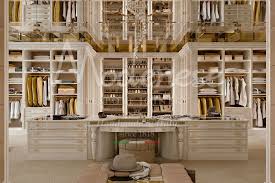In the race to impress homebuyers with marble flooring, imported fittings, and smart home systems, there’s one often-overlooked detail that can quietly ruin the luxury experience: water pressure.
It’s the difference between a rainfall shower that relaxes you or leaves you standing under a trickle. Between a high-end Jacuzzi tub filling in minutes or taking half an hour. And between a smooth morning routine or constant frustration.
Despite all the aesthetic upgrades, poor water pressure is a functional flaw that luxury buyers are no longer willing to ignore.
This blog breaks down why water pressure matters, where developers often cut corners, and what architects and plumbing teams should do differently—especially in places like Dubai, where premium living is the norm, not the exception.
Why Water Pressure Is Crucial in Luxury Homes
| Reason | Impact on Homeowners |
|---|---|
| Performance of luxury fittings | Rain showers, body jets, and bathtubs need strong flow |
| User comfort | Inconsistent pressure disrupts the daily routine |
| Appliance efficiency | Dishwashers and washing machines underperform |
| Property perception | Buyers link good pressure with build quality |
| Long-term plumbing health | Poor pressure can mask design flaws or blockages |
What Defines “Good” Water Pressure?
Water pressure is usually measured in bars (1 bar = the force needed to raise water to 10 meters). For modern luxury homes:
- Showers and faucets need at least 1.5 to 2 bars
- Rain showers or body jets need 3 bars or more
- Multiple fixtures running together need system-wide stability
Developers often don’t factor in simultaneous usage across multiple bathrooms, kitchens, and service areas. This creates weak points—especially during peak hours.
Common Developer Mistakes with Water Pressure
1. Undersized pipes or poor layout design
Too many elbows, bottlenecks, or narrow pipes cause pressure drops.
2. Inadequate pressure boosting systems
If a building doesn’t have a pressure pump, water flow on higher floors suffers drastically.
3. Lack of zoning or flow balancing
All areas draw from a single line without regulating or prioritizing critical areas like master bathrooms.
4. Overlooking water pressure regulators
Without regulators, pressure can be too high in some zones, leading to damage or leakage.
5. Post-handover blame game
Developers often push plumbing issues to maintenance teams, frustrating homeowners looking for accountability.
How It Affects the Luxury Buyer Experience
Buyers today are savvy. They test faucets, ask about booster pumps, and know the difference between an overhead and a rainfall shower. Poor water pressure isn’t just an inconvenience—it undermines the brand promise of a “premium lifestyle.”
In high-end projects, where the smallest details are marketed aggressively, plumbing performance becomes a key deal-breaker.
Water Pressure and Fixture Compatibility
Modern fittings are often imported and require specific flow ranges. Here’s a quick guide:
| Fixture Type | Minimum Pressure Required | Issue with Low Pressure |
|---|---|---|
| Rain showers | 2.5–3 bar | Thin flow, no rain effect |
| Hand showers | 1.5 bar | Weak jet, poor rinsing |
| Freestanding bathtubs | 2 bar | Long fill times |
| Body jets or spa panels | 3+ bar | Uneven spray or non-functional jets |
| Sensor faucets | 1.5–2 bar | Sensor misfires or no flow |
Best Practices Developers Should Adopt
1. Conduct hydraulic calculations at the design stage
Pressure needs to be mapped like lighting or HVAC—not left to trial and error.
2. Invest in booster systems
Especially in villas and multi-storey towers, pressurised systems are not a luxury—they’re essential.
3. Zone out the plumbing system
Different wings or floors should have pressure balancing to avoid “water wars” during peak usage.
4. Collaborate with fixture suppliers
Brands like Grohe, Kohler, or Hansgrohe offer guidance on optimal pressure levels for their products.
5. Educate the sales and site teams
Let them talk about pressure systems with as much confidence as they talk about floor plans.
Case in Point: Dubai’s Real Estate Scene
In a city where developments compete on who has the bigger pool or smarter tech, water pressure is surprisingly neglected. Many high-end towers in Business Bay and Marina have gorgeous bathrooms that simply don’t deliver on performance.
Meanwhile, villas in Arabian Ranches or Damac Hills that installed proper boosting systems early have seen fewer post-handover complaints and better resale values.
What Buyers Can Ask
If you’re buying or renting a premium home, here’s what to check:
- Is there a central booster system installed?
- What’s the average water pressure at the tap?
- Are there regulators to control pressure surges?
- Are the fittings compatible with the installed system?
- Has the plumbing been tested under simultaneous use?
Great architecture turns heads. But great plumbing earns trust. In luxury real estate, water pressure may not make it to the brochure—but it can make or break the experience.
Developers who overlook it risk losing credibility and long-term buyers. And those who get it right? They create homes that feel premium not just in appearance, but in every moment of everyday living.
In 2025, buyers aren’t just asking what the bathroom looks like. They’re asking how it works. And water pressure is where the answers begin.

)
)
)
)




